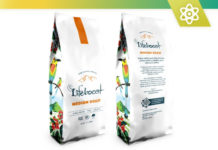Maintaining an active lifestyle becomes increasingly essential for our overall health and well-being as we age. Regular exercise can help seniors maintain mobility, improve strength, enhance balance, and prevent chronic diseases. Despite the common belief that physical activity is only for the young, older adults benefit greatly from a well-rounded exercise routine that includes strength training, flexibility, balance exercises, and cardiovascular activity. This article will provide a comprehensive guide on how seniors can embark on a fitness journey that promotes longevity and vitality.
The Importance of Exercise for Seniors
Engaging in regular physical activity offers numerous advantages for older adults. Beyond weight management, exercise significantly enhances the quality of life. It improves cardiovascular health, reduces the risk of heart disease, aids in managing diabetes, enhances mental health by alleviating depression and anxiety, and promotes better sleep patterns. Moreover, staying active helps maintain bone density, reducing the risk of osteoporosis and fractures.
One crucial component of senior health is maintaining muscle mass, which naturally decreases with age, a condition known as sarcopenia. Strength training exercises are essential in combating this decline, helping seniors stay strong and independent.
Strength Training: Building and Preserving Muscle Mass
Strength training isn't just for bodybuilders; seniors need to maintain muscle mass and strength. Simple exercises can make a profound difference. Examples include:
- Wall Pushups: Stand about three feet away from a wall, place your hands on the wall at shoulder height, and lean in, keeping your body straight. Push back to the starting position. This exercise strengthens the chest and arms, enhancing upper body strength.
- Abdominal Contractions: Sit straight in a chair and take a deep breath. Tighten your abdominal muscles while exhaling and hold for a few seconds before releasing. This is a subtle yet effective way to strengthen the core.
- Pelvic Tilts: Lie on your back with your knees bent. Tighten your buttocks and tilt your pelvis slightly upwards. Hold for a few seconds before lowering it. This exercise strengthens the lower back and core muscles.
These exercises require minimal equipment, making them accessible to many. For a more comprehensive guide to strength training, visit Healthline's Everyday Fitness for Seniors.
Flexibility: Enhancing Range of Motion
Maintaining flexibility is crucial for seniors. It helps perform daily activities efficiently and reduces the risk of injuries. Regular stretching exercises can improve flexibility, making everyday tasks like reaching for objects or tying shoes easier. Here are some beneficial stretches:
- Seated Hamstring Stretch: Sit on a chair with your feet flat on the floor. Extend one leg outward, keeping your heel on the floor, and your toes pointed upward. Slowly reach towards your toes, feeling the stretch in your hamstring. Hold for 10-20 seconds and switch legs.
- Wrist Stretch: Bring your hands together in prayer and gently bend them from side to side. This exercise is excellent for improving wrist flexibility and reducing stiffness.
Incorporating these stretches into your daily routine can significantly enhance your body's range of motion and overall flexibility. Check out the NIH's guide on exercise and physical activity for more detailed exercises.
Balance: Preventing Falls and Enhancing Stability
Falls are a significant concern for older adults, often leading to severe injuries. Improving balance through specific exercises can help prevent falls and enhance stability. Consider incorporating these balance exercises into your routine:
- Single-Leg Balance: Stand with your feet hip-width apart and your hands on your hips. Lift one foot off the ground, bending the knee slightly. Hold this position for 10-30 seconds before switching legs.
- Toe Stands: Stand behind a chair and lift yourself onto your toes. Hold for 10-20 seconds and repeat. This exercise strengthens the calves and improves balance.
Regularly practicing these exercises can help you navigate uneven surfaces and reduce the risk of falls. For a detailed guide on balance exercises, visit Healthline's senior workouts.
Cardiovascular Exercise: Boosting Heart Health
Cardiovascular exercise is essential for maintaining a healthy heart and lungs. It helps in improving endurance and overall energy levels. Some accessible cardio exercises for seniors include:
- Walking: A 30-minute walk daily can significantly improve cardiovascular health. If 30 minutes is too long, break it into two 15-minute sessions.
- Cycling: Whether on a stationary bike or a traditional one, cycling is a low-impact exercise that enhances heart health and leg strength.
- Swimming: Swimming or water aerobics provide a full-body workout that is gentle on the joints, making it ideal for seniors.
These activities can be tailored to fit various fitness levels and preferences. For inspiration, visit Ageility's 30-minute workout for seniors.
Creating a Balanced Workout Routine
A balanced workout routine for seniors should include strength training, flexibility exercises, balance activities, and cardiovascular workouts. Aim to exercise most days of the week, incorporating variety to keep the routine engaging and effective. Here is an example weekly workout plan:
- Monday: Strength training (Wall Pushups, Abdominal Contractions, Pelvic Tilts)
- Tuesday: Flexibility exercises (Seated Hamstring Stretch, Wrist Stretch)
- Wednesday: Cardiovascular exercise (Walking or Cycling)
- Thursday: Balance exercises (Single-Leg Balance, Toe Stands)
- Friday: Strength training
- Saturday: Flexibility exercises
- Sunday: Rest day or light activity such as a leisurely walk
Safety Tips and Considerations
Before starting any new exercise program, it's essential to consult with a healthcare provider, especially for individuals with pre-existing health conditions. They can provide guidance tailored to personal health needs and limitations. Here are some additional safety tips:
- Start Slowly: Begin with low-intensity exercises and gradually increase the intensity and duration as fitness levels improve.
- Stay Hydrated: Drink plenty of water before, during, and after exercising to stay hydrated.
- Wear Appropriate Gear: Wear comfortable clothing and supportive shoes to prevent injuries.
- Listen to Your Body: If you experience pain, dizziness, or shortness of breath, stop exercising and consult a healthcare provider.
Staying Motivated and Consistent
Staying motivated can be challenging, but setting realistic goals and tracking progress can help. Here are some tips to keep you on track:
- Set Clear Goals: Define specific, achievable goals to work towards, such as increasing the number of repetitions or duration of exercises.
- Find a Workout Buddy: Exercising with a friend or joining a group class can make workouts more enjoyable and social.
- Keep a Journal: Track your workouts to monitor progress and stay motivated by seeing improvements over time.
- Reward Yourself: Celebrate milestones with non-food rewards, such as a new pair of workout shoes or a relaxing massage.
The Mental Benefits of Exercise
Exercise benefits the body and the mind. Regular physical activity has been shown to reduce symptoms of depression and anxiety, improve mood, and enhance cognitive function. Engaging in exercises that require coordination and concentration, such as yoga or tai chi, can be particularly beneficial for mental health.
Additionally, the social aspect of group classes or exercising with friends can reduce feelings of loneliness and isolation, common among seniors. This social interaction can further boost mental well-being and overall happiness.
Conclusion
Incorporating a well-rounded exercise routine into your daily life is crucial for maintaining health and vitality as you age. Strength training, flexibility exercises, balance activities, and cardiovascular workouts uniquely promote overall well-being. By following the guidelines and tips in this article, seniors can achieve their fitness goals and enjoy a higher quality of life.
For further reading and resources on senior fitness, visit the official pages of Agility and the National Institutes of Health. Embrace the journey of staying active and healthy, and remember that every step you take towards fitness is a step towards a longer, healthier life.













![Bowflex Max Total: 2024 Fitness Workout Exercise Machine [Review] Bowflex Max Total: 2020 Equipment Review For Complete Upper and Lower Body Workout](https://www.advancedliving.com/wp-content/uploads/2019/12/Bowflex-Max-Total-218x150.jpg)


